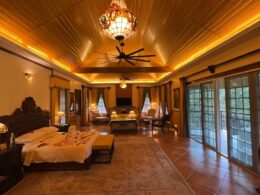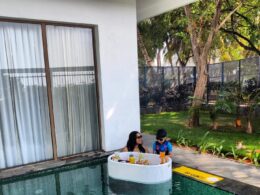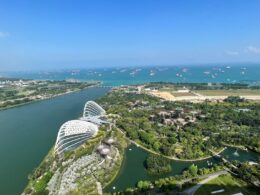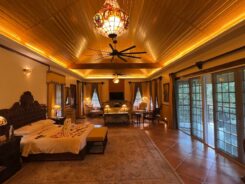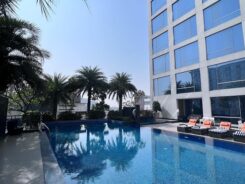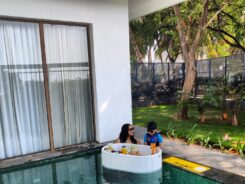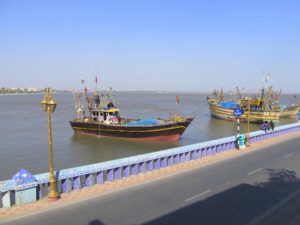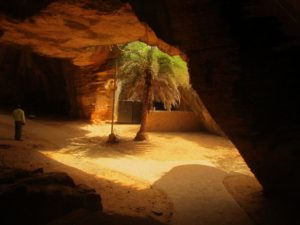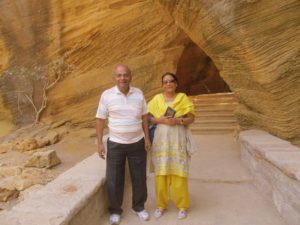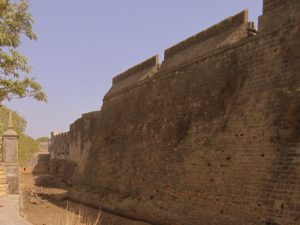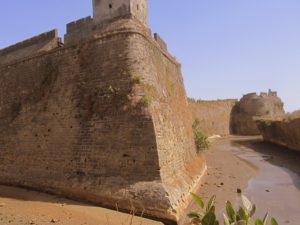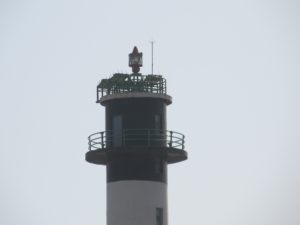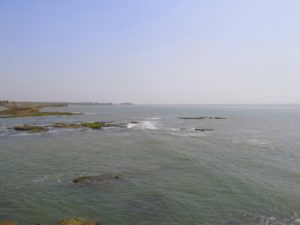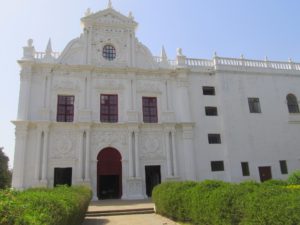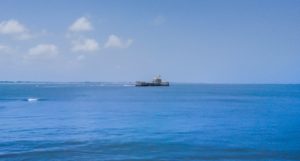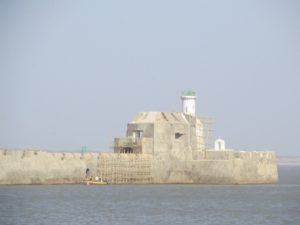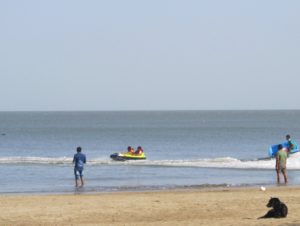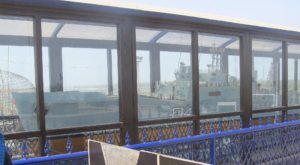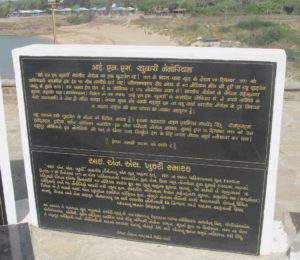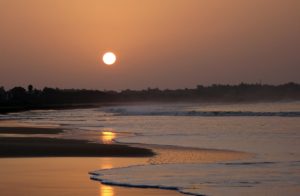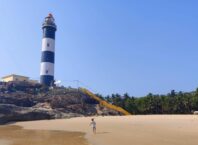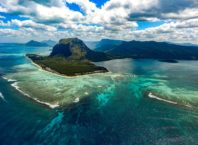Missed often on the usual tourist circuit, Diu is a small island in the Union Territory of Daman and Diu, connected by bridges and ferries to the mainland. About two hours drive from Somnath, where we spent Maha Shivratri experiencing the festivities, we didn’t want to miss out on our Diu trip having come so far.
After a bustling time in Somnath, the deserted roads to Diu were a welcoming change. Diu was also a Portuguese colony and the architecture here will remind you a bit of Goa and Pondicherry. Being a small island, all the main tourist attractions can be easily covered in a day.
Naida Caves
Our first stop in Diu trip was the Naida caves. These rock labyrinths are one of the most underrated tourist attractions and I had not heard about them before visiting Diu. These caves form what seems like an underground channel of tunnels and due to the streaming sunlight are quite picturesque.
These caves are believed to be manmade by the Portuguese as they quarried rocks from here to build monuments around the island. Another legend that we heard from our driver was that these were used by robbers to hide from the authorities. No matter what the truth is, these caves make a great place to get some rest and wonder about their mystery.
Diu Fort
Diu trip cannot be completed without visiting this magnanimous fortress and fortifications overlooking the sea. This defensive fort and castle was built by the Portuguese in the 16th century and is also called ‘Praça de Diu’. The fortress was surrounded by a moat that used to be filled with crocodile-infested waters.
The Portuguese built this sandstone castle to garrison their soldiers and to protect their hold in their prized colony of Diu. The ground plan of the fortress and its design speaks of the strength and defensiveness that the fort was built to serve. This strategic fort was created to show might and power and to ward off any attempts of attacks from land or sea.
The Portuguese got full control of Diu in 1538 and continued their rule till ‘Operation Vijay’ in 1961. This military operation by India led to the freedom of Goa, Daman and Diu from the Portuguese colonial rule.
With gorgeous panoramic views of the Arabian sea, what survives of Diu Fort are the ruins of archways, bastions, archways and ramparts. You can still see the better-preserved copper cannons on the fort walls. And a large lighthouse that majestically stands at the end of the fortress. Some other buildings that you can explore are a warehouse, prayer hall, mortuary, a museum and a church.
St Paul’s Church
Located inside the Diu Fort, St Paul’s Church was built in 1601 AD in baroque style. This church is similar to Bom Jesus Basilica church in Goa which is a UNESCO heritage site. The interiors of St Paul Church exhibits intricately carved woodwork and beautiful decorations in white stucco that are said to be one of the finest handiwork found in the churches in India built by Portuguese.
Pani Kotha
The highlight for me during our Diu trip, Pani kotha is a fortress built in the middle of the sea. Locally known as Pani kotha. the Portuguese called it Fortim Do Mar. From a distance it looks like a ship at sea but it served as a prison during the Portuguese rule.
Currently, the fort is under renovation and the ferries have stopped taking tourists to Pani Kotha. Even then, the view of the fort from Diu fort is spellbinding. Adding to the mystery is the fact that locals say that there is a secret passageway connecting Pani Kotha to Diu fort but it hasn’t yet been discovered.
Nagao Beach
The beaches in Diu are mostly unadulterated. Reminded me of the virgin beaches of Gokarna and South Goa. Quite uncommercialized and with thin crowds, this beach is ideal for a swim and sunbathe. The entrance has sitting areas and benches. There are zones with water sports like water scooters, parasailing and boating activities. If you are on a Diu trip with the family, recommend that you visit the beach before it gets dark.
INS Khukhri Memorial
A war memorial and an emotional tribute to a story that has got lost in the pages of history. During 1971 war, a Type 14 anti-submarine warfare frigate of the Indian Navy named INS Khukhri was torpedoed and sunk off the coast of Diu, by a Pakistani submarine. The captain of the ship, Captain M N Mulla chose to go down with his ship and was awarded the Maha Vir Chakra posthumously for his gallantry and valor. INS Khukhri went down with its crew of 18 officers and 176 sailors and the sacrifice of these Indian Navy sailors became an inspiration to the whole nation.
The memorial which is a replica of INS Khukhri is located on a small hillock at Chakratirth Beach. A beautifully landscaped terrace opens out to the scenic sea view and promises perfect sunset views in the evening.

